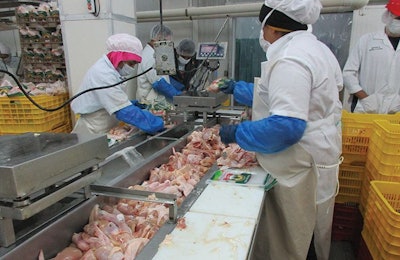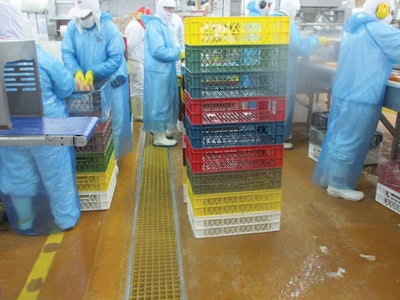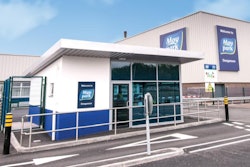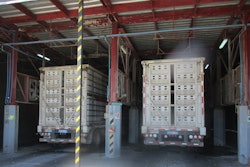
Any backlog of product during packing at the poultry processing plant can lead to a significant drop in output. To prevent this, there are models and lessons from the processing operations that can be applied to the packing operations that occur further down the line.
Modern processing plants are able to process up to 14,000 birds per hour, and cutup and deboning have reached amazing speeds. Despite high levels of synchronization, such efficiency is not always seen when it comes to the bins into which whole birds or parts are placed to be individually or bulk packed and then boxed.
Boxed product then moves via a network of conveyor belts of various types, weighed and then placed onto pallets before being wrapped in film and moved to the refrigeration area.
These last stages at the plant are different to the primary processing operations where birds are moved by overhead conveyor and where, rather than operations being dictated by staff, staff must adjust their performance to the speed of the conveyor.
Cut and deboned product is moved by conveyor belt, and staff take product for bagging or placing into trays, and which are then placed back onto the tray for boxing.
Depending on the quantity of product processed, the network of conveyor belts in any given plant can be extensive. This requires a substantial initial investment and has ongoing costs, such as cleaning and disinfection. This can require a substantial number of people and require large volumes of water and disinfectants.
Benefits of simplicity
Yet a much simpler method of moving product is available and already in use in some plants.
This alternative method comprises an aerial conveyor, similar to those used to move plastic boxes from the washing and disinfection area to the area where they are filled with finished product.
From it are hung stainless steel cage-like structures with three shelves which can be filled with trays of processed product. Each shelf can take a different type of product and will be filled as it moves to toward the packing area where filled trays can be removed and placed into boxes.

A simple, suspended cage-like structure can speed operations, preventing bottlenecks. (Eduardo Cervantes Lopez)
The system is more operationally efficient than traditional methods, and cleaning is also simpler and quicker given that no poultry meat is in contact with any of the metal surfaces. Consumption of water, disinfectant and other cleaning materials is also lower than when cleaning a belt system.
Aerial transportation makes the movement of staff easier as the floor area has fewer obstacles, and it can also make supervision easier. In most plants, a raised platform is necessary to afford the supervisor a clear view of operations, however, aerial transportation renders this unnecessary.

A clear view of operations can help to ensure tasks are being properly performed. (Eduardo Cervantes Lopez)

















